Accepted Scientific Name: Echinomastus unguispinus (Engelm.) Britton & Rose
Cactaceae (Britton & Rose) 3: 150, fig. 155. 1922 Britton & Rose
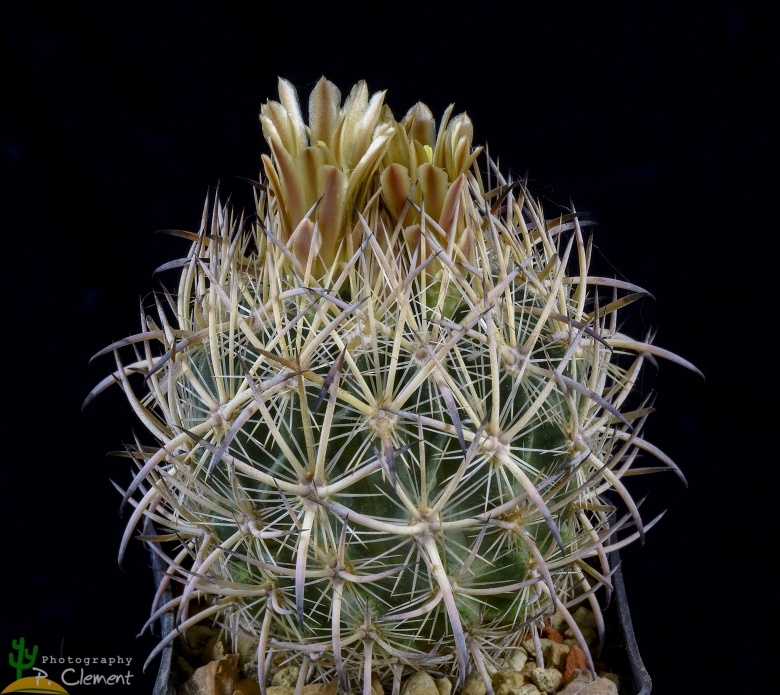
Echinomastus unguispinus subs. laui Photo by: Peiffer Clement
Origin and Habitat: Salinas, San Luis Potosi, Mexico.
Altitude: 1800-2000 metres above sea level.
Habitat: Grows together with Echinofossulocactus zacatecasensisSN|3378]]SN|3378]].
Synonyms:
See all synonyms of Echinomastus unguispinus
back
Accepted name in llifle Database:Echinomastus unguispinus (Engelm.) Britton & RoseCactaceae (Britton & Rose) 3: 150, fig. 155. 1922Synonymy: 18
back
Description: Echinomastus unguispinusSN|14901]]SN|14901]] subs. laui , better known as Echinomastus lauiSN|14901]]SN|14917]] is one of the geographical or morphological forms of Echinomastus unguispinusSN|14917]]SN|14901]]. Many of its geographical variant was early classified as different independent species, but nowadays all this plant are considered part of a multiform species, where each form is linked to others by populations of plants with intermediate characteristics. E. unguispinus subs. Laui does not appear to differ from typical E. unguispinus in any significant respect apart its heavier central spines and occupies the southernmost regione of the distribution range of the species.
Habit: Plants solitary with spines almost hiding the body.
Stem: Globular with a slightly flattened apex to short cylindrical 7-14 cm tall, 7-15 cm in diameter, gray-green or bluish green.
Ribs: 13-21(-25) strongly tuberculate.
Areoles: Slightly elongated without (or with very reduced) nectar glands.
Radial spines:15-30 white to yellowish to blue-gray with black apex, becoming gray with age, 15-33 mm long irregularly spreading, some interlacing.
Central spines: 3-9 (usually 4), stronger than in typical Echinomastus unguispinusSN|14901]]SN|14901]], acicular, white, pale yellow to brownish but with brown to black tips, the upper side is always darker than the bottom side, straight to curved, up to 35 mm long, directed upwards, lower one robust, noticeably down-curved from near the base pointing outward and downward.
Flowers: Hardly gettig through the dense apical spines, funnelform, dirty yellowish-green but darkening as they ripen getting from green to reddish-brown, remaining erect up to 2.5 cm in diameter.
Subspecies, varieties, forms and cultivars of plants belonging to the Echinomastus unguispinus group
 Echinomastus mapimiensis Backeb.: Its habit is very similar to that of E. unguispinus v. durangensis, with longer and thicker central spines.
Echinomastus mapimiensis Backeb.: Its habit is very similar to that of E. unguispinus v. durangensis, with longer and thicker central spines. Echinomastus unguispinus (Engelm.) Britton & Rose: has whitish to dark, lower central spine pointing outward and downward, 15–35 mm long. Distribution: Chihuahua, Coahuila, Durango, Zacatecas, and San Luis Potosi.
Echinomastus unguispinus (Engelm.) Britton & Rose: has whitish to dark, lower central spine pointing outward and downward, 15–35 mm long. Distribution: Chihuahua, Coahuila, Durango, Zacatecas, and San Luis Potosi. Echinomastus unguispinus subs. durangensis (C.Runge) U.Guzmán: is a little smoller, with more slender, much finer and lighter-colored spines, none of them strongly recurved. Distribution: Zacatecas and Durango, Mexico.
Echinomastus unguispinus subs. durangensis (C.Runge) U.Guzmán: is a little smoller, with more slender, much finer and lighter-colored spines, none of them strongly recurved. Distribution: Zacatecas and Durango, Mexico. Echinomastus unguispinus subs. laui (G.Frank & Zecher) Glass: has stronger and longer central spines and occupies the southernmost regione of the distribution range of the species. Distribution: Salinas, San Luis Potosi.
Echinomastus unguispinus subs. laui (G.Frank & Zecher) Glass: has stronger and longer central spines and occupies the southernmost regione of the distribution range of the species. Distribution: Salinas, San Luis Potosi.
Bibliography: Major references and further lectures
1) Edward Anderson “The Cactus family” Timber Press, Incorporated, 2001
2) James Cullen, Sabina G. Knees, H. Suzanne Cubey "The European Garden Flora Flowering Plants: A Manual for the Identification of Plants Cultivated in Europe, Both Out-of-Doors and Under Glass" Cambridge University Press, 11/Aug/2011
3) David R Hunt; Nigel P Taylor; Graham Charles; International Cactaceae Systematics Group. "The New Cactus Lexicon" dh books, 2006
4) Krainz, Hans et al. “Die Kakteen” 1956-1975
5) Hiroshi Hirao “Colour encyclopaedia of cacti” Seibundo Shinkosha, 1979
6) Gómez-Hinostrosa, C. & Hernández, H.M. 2013. Sclerocactus unguispinus. In: IUCN 2013. "IUCN Red List of Threatened Species." Version 2013.2. <www.iucnredlist.org>. Downloaded on 06 April 2014.
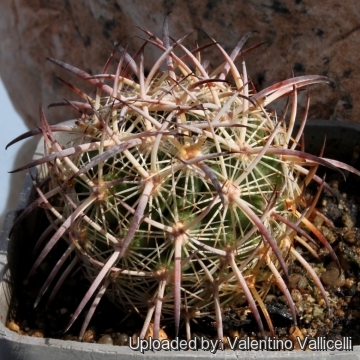 LAU1123 Salinas, San Luis Potosi, Mexico Altitude: 1800-2000m Photo by: Valentino Vallicelli
LAU1123 Salinas, San Luis Potosi, Mexico Altitude: 1800-2000m Photo by: Valentino Vallicelli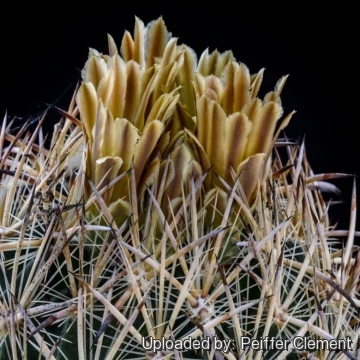 Echinomastus unguispinus subs. laui Photo by: Peiffer Clement
Echinomastus unguispinus subs. laui Photo by: Peiffer Clement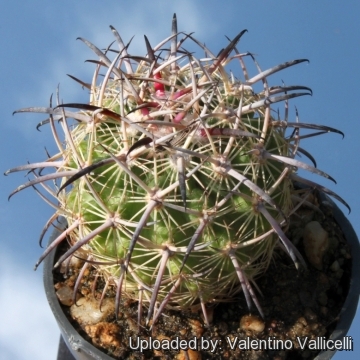 Echinomastus unguispinus subs. laui Photo by: Valentino Vallicelli
Echinomastus unguispinus subs. laui Photo by: Valentino Vallicelli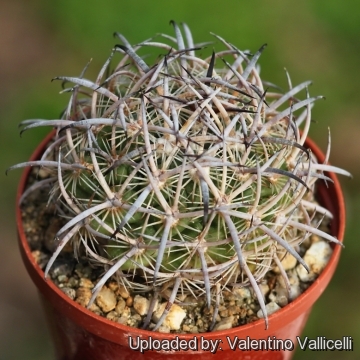 Echinomastus unguispinus subs. laui Photo by: Valentino Vallicelli
Echinomastus unguispinus subs. laui Photo by: Valentino Vallicelli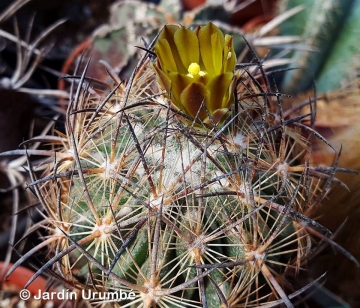 Echinomastus unguispinus subs. laui Photo by: Alexander Arzberger
Echinomastus unguispinus subs. laui Photo by: Alexander Arzberger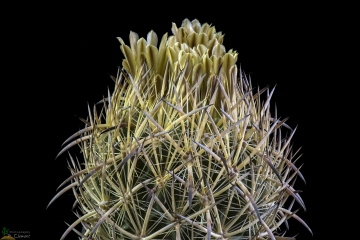 Echinomastus unguispinus subs. laui Photo by: Peiffer Clement
Echinomastus unguispinus subs. laui Photo by: Peiffer Clement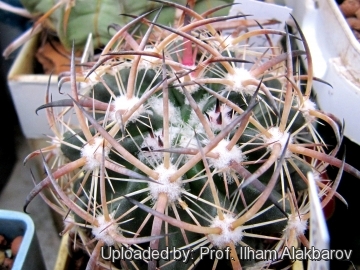 Echinomastus unguispinus subs. laui Photo by: Prof. Ilham Alakbarov
Echinomastus unguispinus subs. laui Photo by: Prof. Ilham Alakbarov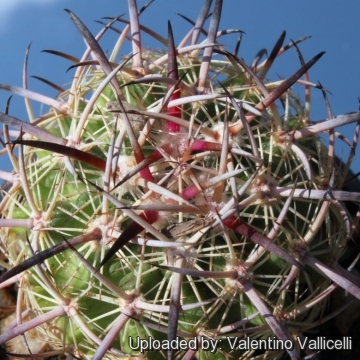 Echinomastus unguispinus subs. laui Photo by: Valentino Vallicelli
Echinomastus unguispinus subs. laui Photo by: Valentino VallicelliCultivation and Propagation: This is one of the most beautiful cacti but rarely seen in cultivation, it needs perfect drainage to flourish. It is quite difficult to grow on its own roots. Very easily rot! It’s thought that’s better to watch this species in photo or in the natural habitat rather than to try to cultivate it. For this reasons the plant is often grafted on a frost hardy stock.
Soil: Give an open soil that drains fast, and avoid mixtures containing peat or any other form of sphagnum moss.
Exposure: This plant need full sun and above all a very good ventilation, especially in winter.
Water requirements: Keep totally dry during winter, and in summertime make sure that the soil dries enough between waterings. It can tolerate temperature below zero (-5° C or less).
Remarks: Mature individuals - if the growing conditions are not optimal, easily rot and die.
Propagation: Seeds are relatively difficult to germinate (only a limited percentage of seeds germinate). Moreover it is easy for the seed to get lost behind the spines, which are stiff enough that when you try to retrieve them you just might loose them altogether. Grafting is often used to speed growth rate and to create a back-up for plants in collection.
Your Photos
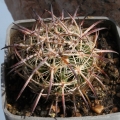
by Valentino Vallicelli
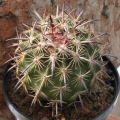
by Valentino Vallicelli




















